| RESEARCH PROCEDURES |
Victor's stable radical synthesis requires
creating several radical intermediates. These intermediates are
very air/water sensitive and unstable, therefore most of his reactions
are performed under nitrogen gas and sealed in tubes called Schlenk
Tubes. |
|
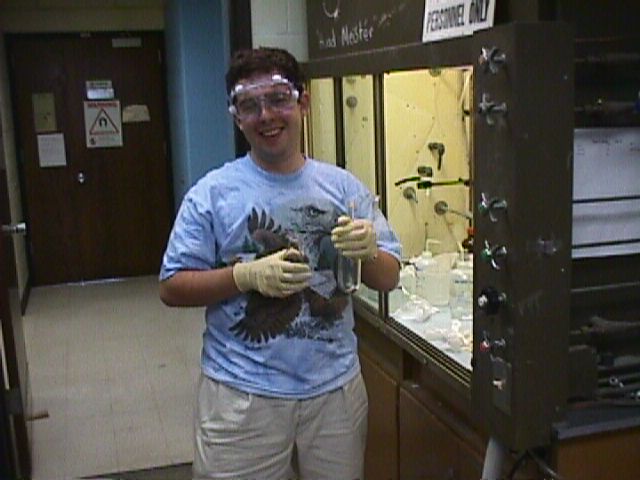
|
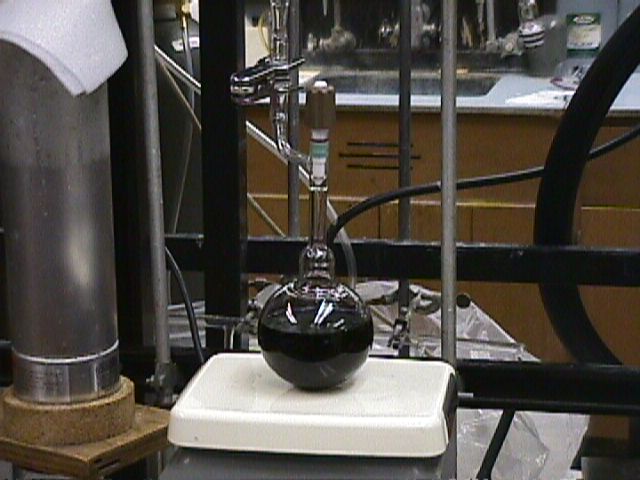
|
|
An essential component of Victor's work is
to ensure that the glassware is cleaned and dried prior to placing any
reactants in the apparatus. Victor has one of the schlenk tubes in
which he will be placing his initiator molecule and other reactants. The second picture shows one reaction in a schlenk tube that
is sealed under nitrogen gas. |
|
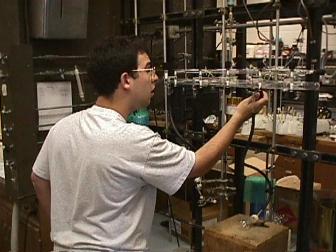
|
The initiation reaction is very sensitive to air and
water. The nitrogen system here that Victor is regulating will
allow only nitrogen gas into the schlenk tubes that prevents any mixing
of air or water in the reaction vessels. |
|
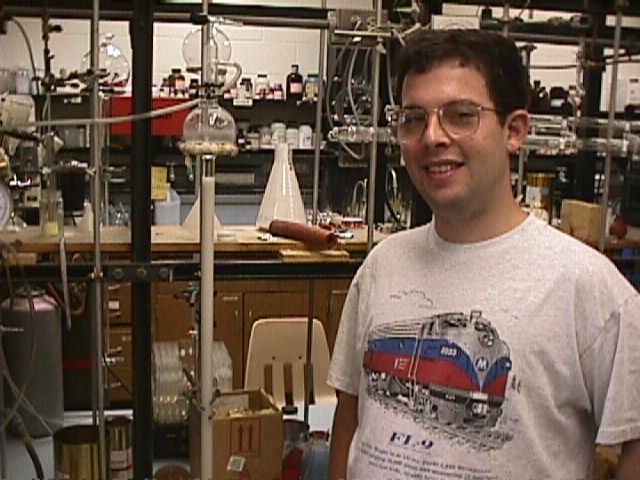
|
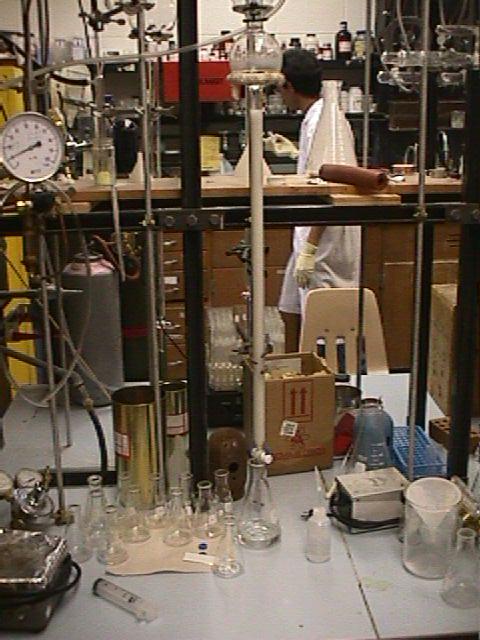
|
|
Isolating a product can be performed by
using a column chromatography
appartus. This separates substances
based on molecular properties such as mass, charge or chemical
affinity. The column that Victor is using contains silica gel,
(microscopic sand beads) which separates his sample based on the
molecules affinity to this gel. The greater the affinity to the gel a
molecule (mobile phase) possesses the longer it takes to travel through
the gel (stationary phase). Victor is hoping to obtain a relatively pure sample which he will
evaluate by performing an NMR
on the separated fractions. |
|
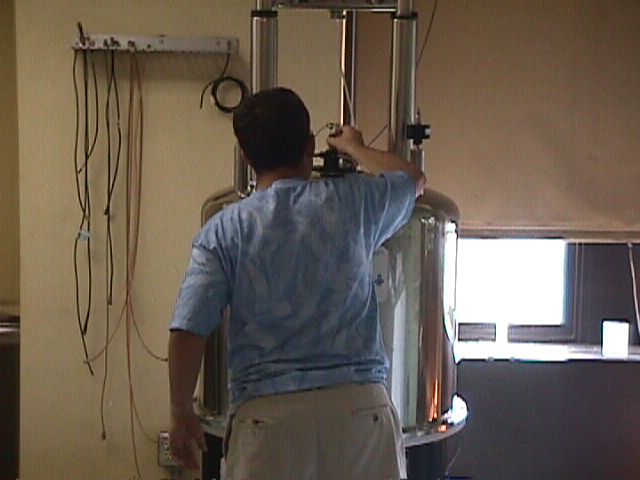
|

|
|
Victor is placing his product sample into
the NMR magnet and then has to evaluate the data obtained. |
|
|
|
|
|
|
|
|
|






